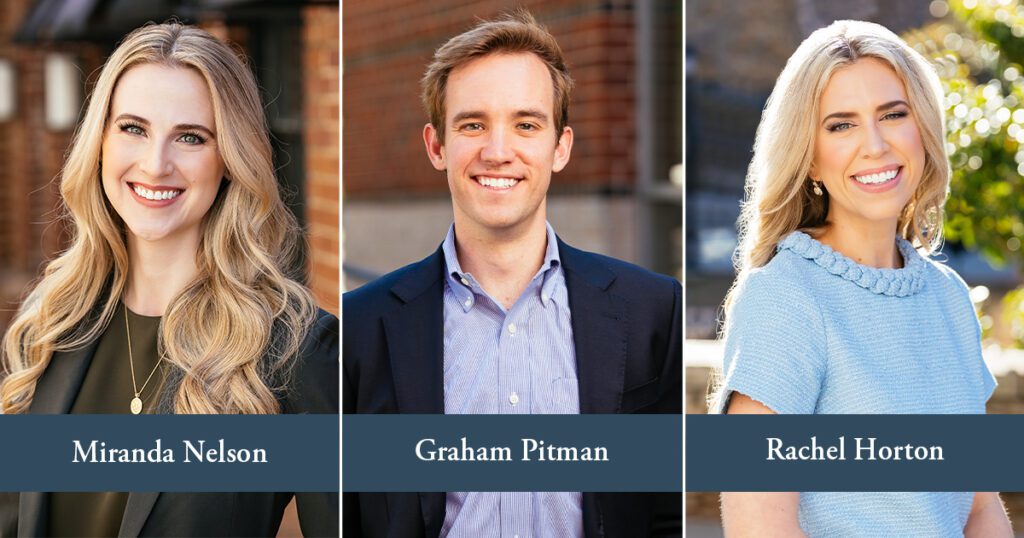Written by Wyche attorney, John C. Moylan
January 2012
From 1988 through 2010, the United States has recovered more than 27 billion dollars through the False Claims Act and whistleblowers have received nearly 3 billion dollars in relator share awards. See the Department of Justice Fraud Statistics Overview for more information. That 3 billion dollars does not include relators’ recoveries for retaliatory acts or other employment related recoveries known as section (h) claims and also does not include recoveries pursuant to the False Claims Acts of 28 states and the District of Columbia.
The rapid growth rate of recoveries over the past two decades may be even more remarkable than the total recovery. In 1988, relators received a grand total of $97,188 in awards. By 2010, that number had increased to over $385,000,000 – an average of more than one million dollars a day. Those 2010 relators’ awards reflect an increase of 49% from the previous year which was itself a 28% increase from 2008.
Who is eligible to share in whistleblower recoveries under the False Claims Act, how are the recoveries and relators’ awards calculated, and what other claims and protections are available to those who would blow the whistle on fraud against the United States?
I. Who May Bring a Claim Under the Federal False Claims Act?
The False Claims Act provides very broadly that “[a] person may bring a civil action for a violation of section 3729 for the person and for the United States Government.” 31 U.S.C. §3730(b)(1). While the claim may be brought by any person, the claim must be brought in the name of the United States and, if it intervenes, the government controls the litigation of the case.
Prior to 2000, defendants often raised constitutional challenges to the standing of “any person” to bring an action on behalf of the government. According to the argument, relators lacked the basic prerequisites to satisfy Article III. See Lujan v. Defenders of Wildlife, 504 U.S. 555, 560-61 (“to satisfy Article III’s standing requirements, a plaintiff must show (1) it has suffered an injury in fact that is (a) concrete and particularized and (b) actual or imminent, not conjectural or hypothetical; (2) the injury is fairly traceable to the challenged action of the defendant; and (3) it is likely, as opposed to merely speculative, that the injury will be redressed by a favorable decision.”) In 2000, the United States Supreme Court laid those standing concerns to rest when it ruled unequivocally that there is “no room for doubt that a qui tam relator under the FCA has Article III standing.” Vermont Agency of Natural Resources v. United States ex rel. Stevens, 529 U.S. 765, 778 (2000).
While standing no longer poses a hurdle to relators, potential relators’ counsel should be aware of other bars and prohibitions on recovery that do still exist.
A. The False Claims Act does not apply to tax fraud. The False Claims Act specifically excludes claims based on tax fraud: “This section does not apply to claims, records, or statements made under the Internal Revenue Code of 1986.” 31 U.S.C. §3729(d). Nonetheless, Congress recently passed an IRS whistleblower law (26 U.S.C. § 7623) that mimics the False Claims Act in several respects. First, like the False Claims Act, the IRS whistleblower law provides whistleblower awards of 15% to 30% of the amount recovered by the IRS. Second, like the False Claims Act, the IRS whistleblower law provides for up to treble damages to the government. The IRS law applies, however, only “if the tax, penalties, interest, additions to tax, and additional amounts in dispute exceed $2,000,000.” (Section 406 b(5)(b)).
B. A relator may be barred from bringing an action based upon public information and previously disclosed documents unless he or she is an “original source” of the information. Congress has long sought to prevent “parasitic” or copycat lawsuits based primarily on news reports or other public knowledge. Prior to 2010, the False Claims Act provided a jurisdictional bar that
4(A) “No court shall have jurisdiction over an action under this section based upon the public disclosure of allegations or transactions in a criminal, civil, or administrative hearing, in a congressional, administrative, or Government Accounting Office report, hearing, audit, or investigation, or from the news media, unless the action is brought by the Attorney General or the person bringing the action is an original source of the information.
(B) For purposes of this paragraph, “original source” means an individual who has direct and independent knowledge of the information on which the allegations are based and has voluntarily provided the information to the Government before filing an action under this section which is based on the information.”
The public disclosure bar frequently led to relators’ claims being dismissed by the courts. See e.g., United States ex rel. Jamison v. McKesson, 2010 U.S. Dist. LEXIS 28562 (N.D. Miss. Mar. 25, 2010).
On March 23, 2010, President Obama signed into law the Patient Protection and Affordable Care Act (“PPACA”) that significantly eases the public disclosure bar for relators. Although the Act is not retroactive, going forward, the public disclosure bar will apply only to information gleaned from certain enumerated federal sources and the news media: “(i) in a Federal criminal, civil, or administrative hearing in which the Government or its agent is a party; (ii) in a congressional, Government Accountability Office, or other Federal report, hearing, audit, or investigation; or (iii) from the news media.” 31 U.S.C. § 3730 4(A). It no longer prohibits suits based on information disclosed in state or local proceedings. Second, the False Claims Act now gives the United States the opportunity to object to dismissal of suits that may be based on publicly disclosed information: “The court shall dismiss an action or claim under this section, unless opposed by the Government, if substantially the same allegations or transactions as alleged in the action or claim were publicly disclosed . . .” Id. (emphasis added). Third, the PPACA expands the definition of “original source” to include someone “who has knowledge that is independent of and materially adds to the publicly disclosed allegations or transactions.” Id. While cases filed subsequent to the PPACA have not yet wound their way through the courts, it appears that the public disclosure bar may become more of a speed bump than a hurdle.
C. False Claims Act allegations must be plead with Rule 9(b) particularity. Complaints filed pursuant to the False Claims Act must comply with the Federal Rules of Civil Procedure, including Rule 9(b)’s requirement that fraud be plead with particularity. See e.g., United States ex rel. Wilson v. Kellogg Brown & Root, Inc., 525 F.3d 370, 379-80 (4th Cir. 2008) (affirming district court’s dismissal of relator’s third amended complaint under Rule 9(b) because the “complaint lacks any specific facts about several important elements of the alleged scheme.”) For many relators and their counsel, this rule provides a real challenge as the specifics of a particular claim may be known only by the defendant and may well be hidden by the defendant. Nonetheless, courts across the country apply Rule 9(b) and often dismiss Relator’s Complaints on this basis.
D. The False Claims Act contains a “First to File” Rule. As a general rule, if multiple relators file identical or even similar suits against the same defendant, only the first relator to file will be allowed to go forward. See e.g. U.S. ex rel. Hampton v. Columbia/HCA Healthcare Corp., 318 F.3d 214 (D.C. Cir. 2003)(“§ 3730(b)(5) bars any action incorporating the same material elements of fraud as an action filed earlier.”) The specific language of the Act provides that “[w]hen a person brings an action under this subsection, no person other than the Government may intervene or bring a related action based on the facts underlying the pending action.” 31 U.S.C. § 3730(b)(5). This has been described as an “exception free” rule (U.S. ex rel. Lujan v. Hughes Aircraft Co., 243 F.3d 1181, 1183 (9th Cir. 2001)) but at least one exception has arisen. When a Court dismisses the first filed suit on Rule 9(b) grounds, a later, well plead complaint may be allowed to go forward. U.S. ex rel. Walburn v. Lockheed Martin Corp., 431 F.3d 966 (6th Cir. 2005).
E. The False Claims Act prohibits claims against certain defendants. Specifically, the Act provides that “[n]o court shall have jurisdiction over an action brought by a former or present member of the armed forces . . . against a member of the armed forces arising out of such person’s service in the armed forces.” Likewise, “[n]o court shall have jurisdiction over an action brought . . . against a Member of Congress, a member of the judiciary, or a senior executive branch official if the action is based on evidence or information known to the Government when the action was brought.” 31 U.S.C. §3730(e).
II. What Are the Potential Recoveries Under the False Claims Act and How Are The Recoveries Calculated?
The False Claims Act provides that the government may obtain treble damages plus penalties of up to $11,000 per claim. 31 U.S.C. § 3729(G). The strength of this potential recovery plus the prospect of defending a major fraud prosecution by the United States has led to huge recoveries – shared in by the relators who initiated the action. A few examples — (1) In September 2009, the government settled with Pfizer for $1 billion with six relators sharing an award of $105 million; (2) On September 1, 2010, the government reached a civil settlement with Allergan for $225 million. The relators in that litigation received an award of $37.8 million; (3) On September 30, 2010, the government reached a $237.5 million settlement with Novartis Pharmaceuticals with the relator receiving a $25 million share; (4) On June 26, 2003, the Department of Justice announced that HCA had agreed to pay the United States $631 million in civil penalties and the realtors who brought the action would receive an award of $151,591,500.00.
How is the relator’s share determined?
Under the original False Claims Act passed in 1863, the government was entitled to recover double damages and the whistleblower was entitled to receive 50% of the recovery – in theory making the government whole and providing a rich incentive for whistleblowers. See Act of March 2, 1863, ch. 67, § 6, 12 Stat. 696. While relators’ awards are no longer that generous, they still provide hefty incentives for private citizens to come forward with credible information of fraud on the United States.
A. Ranges of relator’s shares under the False Claims Act. Under the current version of the False Claims Act, the law provides for six different scenarios that must be analyzed to determine a relator’s share of the recovery. The relator’s award depends on which of the six scenarios covers his or her situation and, within that scenario, the whistleblower’s performance as a relator. From highest percentage to lowest percentage, the six possible scenarios follow:
(1) 25 to 30% — The highest percentage that may be paid to relators and the highest guarantee of an award may be found at 31 U.S.C. §3730(d)(2): “If the Government does not proceed with an action under this section, the person bringing the action or settling the claim shall receive an amount which the court decides is reasonable for collecting the civil penalty and damages. The amount shall be not less than 25 percent and not more than 30 percent of the proceeds of the action or settlement and shall be paid out of such proceeds. Such person shall also receive an amount for reasonable expenses which the court finds to have been necessarily incurred, plus reasonable attorneys’ fees and costs. All such expenses, fees, and costs shall be awarded against the defendant.” Where the government declines to intervene or join in a relator’s lawsuit and the relator nonetheless pursues that litigation to a successful conclusion, the False Claims Act provides that the relator shall receive a minimum share of 25% of the recovery and a maximum share of 30% of the recovery.
While non-intervened cases reward whistleblowers with the highest percentage of recoveries, qui tam data reveals why this is not the road of choice for relators or their counsel. Historically, the Department of Justice has intervened in fewer than one in four cases filed by relators — just 22% of filed qui tam cases. (See January 24, 2011 Letter from Department of Justice to Senator Charles Grassley). While some cases that proceed without intervention have been very successful, they are the exception to the rule. According to the DOJ Report attached as Exhibit A to this paper, 5,955 qui tam cases have been unsealed between 1987 and 2010. Of those cases, when the government intervened, 1,128 have settled or reached judgment and only 60 have been dismissed. Where the government declined to intervene, however, relators fared much worse: only 253 non-intervened cases have reached settlement or judgment while 3,962 have been dismissed. The magnitude of dollars paid to relators also reflects this discrepancy. Looking at 2010 as an example, relators in non-intervened cases received a higher average — just over 28% — for a total of $27,564,008. That number pales in comparison to the lower average of just under 16% paid in intervened cases but a total relator share of $357,603,566.
In sum, while non-intervened cases pay a higher percentage, the bulk of recoveries come from the lower percentages paid in intervened cases as described below.
(2) 15 to 25% — The percentage of recovery paid to relators in the majority of intervened cases. 31 U.S.C. 3730(d)(1) provides for a relator’s share of 15 to 25% of the recovery when the government intervenes in the litigation: “If the Government proceeds with an action brought by a person under subsection (b), such person shall, subject to the second sentence of this paragraph, receive at least 15 percent but not more than 25 percent of the proceeds of the action or settlement of the claim, depending upon the extent to which the person substantially contributed to the prosecution of the action.”
(3) 0 to 10% — The percentage of recovery paid to relators when the claim is based primarily on information that has already been publicly disclosed. 31 U.S.C. §3730(d)(1) provides that “[w]here the action is one which the court finds to be based primarily on disclosures of specific information (other than information provided by the person bringing the action) relating to allegations or transactions in a criminal, civil, or administrative hearing, in a congressional, administrative, or Government [General] Accounting Office report, hearing, audit, or investigation, or from the news media, the court may award such sums as it considers appropriate, but in no case more than 10 percent of the proceeds, taking into account the significance of the information and the role of the person bringing the action in advancing the case to litigation.” Obviously this 10% cap applies only to those cases that are not completely prohibited by the public disclosure bar discussed in section I.B. above, for instance, to cases in which the government has successfully objected to dismissal pursuant to the public disclosure bar.
(4) 0 to ? — The percentage paid to a relator who plans and initiates a False Claims Act violation but is not criminally convicted of those activities. The False Claims Act gives the courts wide discretion in making an award to a relator who “plans and initiates” a violation of the Act and then reports it. 31 U.S.C. §3730(d)(3) provides that “if the court finds that the action was brought by a person who planned and initiated the violation of section 3729 upon which the action was brought, then the court may, to the extent the court considers appropriate, reduce the share of the proceeds of the action which the person would otherwise receive under paragraph (1) or (2) of this subsection, taking into account the role of that person in advancing the case to litigation and any relevant circumstances pertaining to the violation.” While rewarding a relator who planned and initiated the fraud may seem distasteful, Senator Charles Grassley explained the rationale for this policy: “in some cases, only persons who participated in the false claims practice will have knowledge of the actions. It has long been recognized in both criminal and civil enforcement circles that granting a participant some benefit is often a necessary evil in order to achieve a successful prosecution. The same is true under the False Claims Act.” (134 Cong. Rec. S16, 705 (daily ed. Oct. 18, 1988)).
(5) 0 – The percentage paid to a relator who is criminally convicted of conduct related to a violation of the False Claims Act. Congress has mandated that an individual who participates in the fraud to such an extent that he or she is criminally convicted of that fraud, shall not share in any recovery that may arise from the reporting of that fraud. 31 U.S.C. §3730(d)(3) provides that “[i]f the person bringing the action is convicted of criminal conduct arising from his or her role in the violation of section 3729, that person shall be dismissed from the civil action and shall not receive any share of the proceeds of the action.”
(6) Relator pays defendant – In a relator’s worst case scenario, a court may order the relator to pay the defendant’s attorney’s fees and expenses for bringing a “clearly frivolous” action. The False Claims Act provides at 31 U.S.C. §3730(d)(4) that “[i]f the Government does not proceed with the action and the person bringing the action conducts the action, the court may award to the defendant its reasonable attorneys’ fees and expenses if the defendant prevails in the action and the court finds that the claim of the person bringing the action was clearly frivolous, clearly vexatious, or brought primarily for purposes of harassment.” The Fourth Circuit recently addressed this issue. United States ex rel. Ubl v. IIF Data Solutions et al., (No. 09-2280, April 19, 2011). In Ubl, the district court ordered the relator to pay the defendant attorney’s fees in excess of $500,000. The district court made that order notwithstanding the following facts: 1) The relator and the defendant had entered into a settlement for almost nine million dollars that fell apart only because the government refused to approve it; 2) the district court twice denied defendant’s motions to dismiss; 3) the district court denied defendant’s motion for summary judgment. The Fourth Circuit reversed the district court’s award of attorney’s fees to the defendant and held that the legal standard must be whether the relator’s “claims objectively had any reasonable chance of success.” Id, at 22. Although the Fourth Circuit upheld the jury’s verdict in favor of the defendant, it found that the relator’s claims did have a reasonable chance of success, and reversed the district court’s award of fees to the defendant. Nonetheless, relators and their counsel should be aware of the risks of bringing an action that could be viewed as frivolous.
B. Determining the specific percentage of recovery within each range. To determine a relator’s percentage of recovery, a court (or the Department of Justice in many settled claims), must first determine which of the six scenarios above covers the relator’s actions. Once that has been determined, the next question becomes precisely where the relator falls within that range. There is no definitive formula for making that determination and the statute itself provides very little guidance. See e.g. 31 U.S.C. §3730(d)(1)(specific share between 15 and 25% is to be set “depending upon the extent to which the person substantially contributed to the prosecution of the action.”); 31 U.S.C. 3730(d)(2)(specific share between 25 and 30% is to be based upon “an amount which the court decides is reasonable.”); 31 U.S.C. §3730(d)(3)(in determining the specific amount of share for a relator who planned and initiated the fraud but was not criminally convicted, “the court may, to the extent the court considers appropriate, reduce the share of the proceeds of the action which the person would otherwise receive under paragraph (1) or (2) of this subsection, taking into account the role of that person in advancing the case to litigation and any relevant circumstances pertaining to the violation.”)
Fortunately, additional guidance as to more specific relator’s shares may be found in the legislative history, in Department of Justice guidelines, and in recent court decisions. For a full discussion of these issues, see James B. Helmer, Jr. How Great is Thy Bounty: Relator’s Share Calculations Pursuant to the False Claims Act and U.S. ex rel. Pallares v. Itani, et al. Citing the legislative history, a number of courts have begun with the proposition that “[t]he fifteen percent minimum share generally is viewed as a ‘finder’s fee,’ or ‘incentive compensation’ . . . paid to a relator ‘even if that person does nothing more than file the action in federal court.” Pallares, supra at 5, citing United States ex. rel. Johnson-Pochardt v. Rapid City Regional Hosp., 252 F.Supp. 2d 892, 897 (D.S.D. 2003), citing United States ex rel. Alderson v. Quorum Health Group, Inc., 171 F.Supp. 2d 1323, 1331, 1332 n. 29 (M.D. Fla. 2001)(quoting 132 Cong. Rec. H9832-03 (Oct. 7, 1986). At the upper limit, some courts have suggested that the maximum “25% award is saved for relators who ‘actively and uniquely assist the government in the prosecution of the case.’” Id. at 6, quoting United States ex. rel. Burr v. Blue Cross & Blue Shield of Florida, Inc., 882 F.Supp. 166, 168 (M.D. Fl. 1995). Obviously, a great deal of discretion remains between the minimum award and the maximum recovery. Here too, some guidance may be found.
In passing the False Claims Act, the United States Senate enumerated three factors that should be considered in making a fee award: 1) the significance of the information provided by the relator; 2) the contribution made by the relator to the final outcome; and 3) whether the government had any prior knowledge of the fraud exposed by the relator. See Pallares, supra citing S. Rep. 99-345, at 28 (1986). Significantly more detailed are the internal guidelines used by the Department of Justice in negotiating with relators and their counsel and in setting awards in settled cases. These guidelines provide 14 considerations that may lead to an increase in the relator’s share and 11 additional considerations that may lead to a decrease in the share:
Department of Justice Relator’s Share Guidelines
Section 3730(d)(1) of the False Claims Act (“FCA”), 31 U.S.C. §§ 3729-33, provides that a qui tam relator, when the Government has intervened in the lawsuit, shall receive at least 15 percent but not more than 25 percent of the proceeds of the FCA action depending upon the extent to which the relator substantially contributed to the prosecution of the action. When the Government does not intervene, section 3730(d)(2) provides that the relator shall receive an amount that the court decides is reasonable and shall be not less than 25 percent and not more than 30 percent.
The legislative history suggests that the 15 percent should be viewed as the minimum award — a finder’s fee — and the starting point for a determination of the proper award. When trying to reach agreement with a relator as to his share of the proceeds, or proposing an amount or percentage to a court, we suggest that you begin your analysis at 15 percent. Then consider if there are any bases to increase the percentage based on the criteria set forth below. Having done this, consider if that percentage should be reduced based on the second set of criteria. Of course, absent one of the statutory bases for an award below 15 percent discussed at the end of these guidelines, the percentage cannot be below 15 percent (or 25 percent if we did not intervene).
Items for consideration for a possible increase in the percentage:
- The relator reported the fraud promptly.
- When he learned of the fraud, the relator tried to stop the fraud or reported it to a supervisor or the Government.
- The qui tam filing, or the ensuing investigation, caused the offender to halt the fraudulent practices.
- The complaint warned the Government of a significant safety issue.
- The complaint exposed a nationwide practice.
- The relator provided extensive, first-hand details of the fraud to the Government.
- The Government had no knowledge of the fraud.
- The relator provided substantial assistance during the investigation and/or pretrial phases of the case.
- At his deposition and/or trial, the relator was an excellent, credible witness.
- The relator’s counsel provided substantial assistance to the Government.
- The relator and his counsel supported and cooperated with the Government during the entire proceeding.
- The case went to trial.
- The FCA recovery was relatively small.
- The filing of the complaint had a substantial adverse impact on the relator.
Items for consideration for a possible decrease in the percentage
- The relator participated in the fraud.
- The relator substantially delayed in reporting the fraud or filing the complaint.
- The relator, or relator’s counsel, violated FCA procedures:
- complaint served on defendant or not filed under seal.
- the relator publicized the case while it was under seal.
- statement of material facts and evidence not provided.
- The relator had little knowledge of the fraud or only suspicions.
- The relator’s knowledge was based primarily on public information.
- The relator learned of the fraud in the course of his Government employment.
- The Government already knew of the fraud.
- The relator, or relator’s counsel, did not provide any help after filing the complaint, hampered the Government’s efforts in developing the case, or unreasonably opposed the Government’s position in litigation.
- The case required a substantial effort by the Government to develop the facts to win the lawsuit.
- The case settled shortly after the complaint was filed or with little need for discovery.
- The FCA recovery was relatively large.
These items are not meant to be an exhaustive list of the criteria one should consider when trying to determine an appropriate award for a relator, but they do constitute many of the factors that routinely should be considered. Finally, please note that section 3730(d)(1) limits the relator to no more than 10 percent of the proceeds when the complaint is based primarily on public information and that section 3730(d)(3) allows the court to reduce the percentage below 15 percent if the relator planned and initiated the fraud and requires the court to dismiss the relator if he is convicted for the actions giving rise to the submission of the false claims. (Guidelines reprinted in TAF Quarterly Review Vol. 11 • October 1997)
Courts often look to these guidelines in making fee determinations. See e.g., Pallares, supra at 7-10; Johnson-Ponchardt, supra at 900. Some guidelines, however, have not received universal acceptance from the courts. For instance, whether the case settled or went to trial does not matter to all judges: “[t]his Court does not find any support for the government’s position that the qui tam Plaintiff’s share should differ depending upon whether the case is settled or tried.” United States ex. rel. Pedicone v. Mazak Corp., 807 F.Supp. 1350, 1353 (S.D. Ohio, 1992). Likewise, whether the amount recovered was very small or exceedingly large may be irrelevant: “[t]he success of this [False Claims Act] litigation in continuing to achieve its goals can only be assured by unstintingly providing the qui tam awards dictated by Congress, irrespective of the size of the awards.” United States ex. rel. Merena v. Smithkline Beecham Corp., 52 F.Supp. 2d 420, 450 (E.D. Pa. 1998)
C. Relators have a statutory right to share in “alternate remedies” received by the government. In passing the False Claims Act, Congress recognized that there may be times when the government elects not to proceed with False Claims litigation but chooses rather to pursue alternate administrative remedies and/or criminal charges or even elects to go forward with multiple proceedings simultaneously. To address this possibility, Congress protected the relator in those instances where the government is seeking alternate remedies by providing that “the Government may elect to pursue its claim through any alternate remedy available to the Government, including any administrative proceeding to determine a civil money penalty. If any such alternate remedy is pursued in another proceeding, the person initiating the action shall have the same rights in such proceeding as such person would have had if the action had continued under this section.” 31 U.S.C. §3730(c)(5)
It is now generally recognized that a relator may receive an award from the government’s pursuit of an administrative remedy. See e.g., United States ex. rel. Barajas v. Northrop Corp., 258 F.3d 1004 (9th Cir. 2001)(disbarment proceedings are an ‘alternate remedy’ and relator has a right to share in that settlement); United States ex rel. Bledsoe v. Community Health Systems, Inc., 342 F.3d 634 (6th Cir. 2003)(where government elected not to intervene in relator’s suit but instead filed a separate action based on the same facts, relator was entitled to share in recovery).
Open questions remain as to whether or not the government’s decision to intervene affects a relator’s right to recover in an administrative proceeding and whether criminal proceedings qualify as alternate remedies. See United States v. Bisig, No. 100CV335JDTWTL, 2005 WL 3532554 (S.D. Ind. Dec. 21, 2005)(criminal prosecution may qualify as an alternate remedy under the False Claims Act).
D. Successful Relators are entitled to recover their attorney’s fees and expenses. The False Claims Act specifically provides that a successful relator “shall also receive an amount for reasonable expenses which the court finds to have been necessarily incurred, plus reasonable attorneys’ fees and costs. All such expenses, fees, and costs shall be awarded against the defendant.” 31 U.S.C. §3730(d)(1) Because False Claims Act cases often take years from the initial client visit to an ultimate resolution, attorney’s fees frequently constitute a significant portion of many recoveries under the False Claims Act. See e.g., Miller v. Holzmann, 563 F.Supp.2d 54 (D.D.C. 2008)(awarding relator $7,245,169.07 in attorney’s fees and $287,025.52 in expenses).
While defendants will often fight the reasonableness of an attorney’s fee petition, one district court in South Carolina has taken steps to level the playing field by allowing relators’ counsel to subpoena and to examine the fees charged by the objecting defense counsel in the same case. See, e.g., United States ex. rel. Burdick v. University Medical Associates, 2002 WL 34236885 (D.S.C.), (the author served as counsel in that case):
[T]he [Plaintiffs] requested the defendants’ counsels’ billing records by way of two subpoena duces tecum filed pursuant to Rule 30 of the Federal Rules of Civil Procedure…. [T]he Court concluded that the documents requested by the [plaintiff] were very relevant to the issues now before the Court. Counsel for the defendants . . . practice law within the relevant community, the State of South Carolina, and the rates at which they charge their clients in cases such as this, though not determinative of the issue, are very pertinent thereto. See In re General Motors Corp., 110 F.3d 1003, 1033-34 (4th Cir. 1997)(finding that respondent’s failure to submit its own billing records served as a concession that a petitioner’s requested fees were reasonable). In a similar vein, their hours billed are instructive as to how much time it would take to represent a client in this complex qui tam litigation. Thus, the Court ordered the defendants’ to produce the aforementioned records for review. . . . In short, the defendants’ assertion that the [plaintiffs’] requested rates are excessive rings especially hollow in light of their own billing practices.
Id., fn.17, and p. 45 (emphasis added).
To determine “reasonable” fees, a court will generally follow the lodestar method of compensating the prevailing party on the basis of hours reasonably worked times the prevailing hourly rate. As Judge Houck held in the case above: “[t]he starting point for establishing the proper amount of fees is the number of hours reasonably expended, multiplied by a reasonable hourly rate, or the ‘lodestar.’” citing Hensley v. Eckerhart,461 U.S. 424, 433, 103 S.Ct. 1933, 76 L.Ed.2d 40 (1983). Relator’s counsel should contemporaneously create and maintain detailed time records to support a petition for attorney’s fees.
III. What Protections are Available to those Who Blow the Whistle on Fraud Against the United States?
Not surprisingly, whistleblowers often fear they will lose their jobs or otherwise suffer from retaliation for reporting fraudulent practices to the government, especially if the subject of the report is the whistleblower’s current employer. The False Claims Act provides that Complaints are to be filed under seal and “shall remain under seal for at least 60 days.” 31 U.S.C. §3730(b)(2). In practice, on average a case will remain under seal for 13 months. See Department of Justice letter of January 24, 2011. At the end of that period, however, a whistleblower should assume that her employer will learn her identity. And, in many cases, the employer may be able to determine the employee’s identity based on its knowledge of its employees and/or the government’s inquiries long before the seal is lifted and the identity is confirmed. What, then, keeps an employer from firing, demoting, or otherwise retaliating against a whistleblower?
The False Claims Act specifically prohibits, and provides remedies for, retaliatory acts taken against a whistleblower or potential whistleblower. Commonly referred to as “Section H” claims, the anti-retaliation provisions of the False Claims Act were significantly strengthened by the passage of the Fraud Enforcement and Recovery Act of 2009 (FERA). The statute now reads: “[a]ny employee, contractor, or agent shall be entitled to all relief necessary to make that employee, contractor, or agent whole, if that employee, contractor, or agent is discharged, demoted, suspended, threatened, harassed, or in any other manner discriminated against in the terms and conditions of employment because of lawful acts done by the employee, contractor, agent or associated others in furtherance of an action under this section or other efforts to stop 1 or more violations of this subchapter.” 31 U.S.C. §3730(h).
As seen above, the False Claims Act provides for “all relief necessary” to make the relator “whole.” The remedies for retaliation enumerated in the statute include reinstatement, double back pay, special damages, and attorney’s fees and costs. Id. at (h)(2).
Notably, the False Claims Act now covers retaliation not just against relators who have officially filed a qui tam action but also against “other efforts” to stop fraud, presumably including internal and external reporting of that fraud that may not follow a typical False Claims Act Report to the Government and Complaint.
The FERA amendment also now provides a uniform three year statute of limitations for bringing a retaliation claim. Id. at (h)(3). Prior to FERA, courts looked to the most analogous state employment statute to determine the appropriate statute of limitations – leading to significantly different time limitations depending on where the relator happened to be located. See Graham County Soil & Water Conservation District v. United States ex rel. Wilson, 545 U.S. 409 (2005).
IV. Conclusion
False Claims Act provides potential whistleblowers and their counsel with significant incentives to come forward with credible evidence of fraud on the government. Rewards of up to 30% of the government’s recovery plus attorney’s fees and costs have added up to huge recoveries for some successful relators. In addition, while relators may not be able to stop their employers from taking retaliatory actions, they can certainly make them regret that decision.






